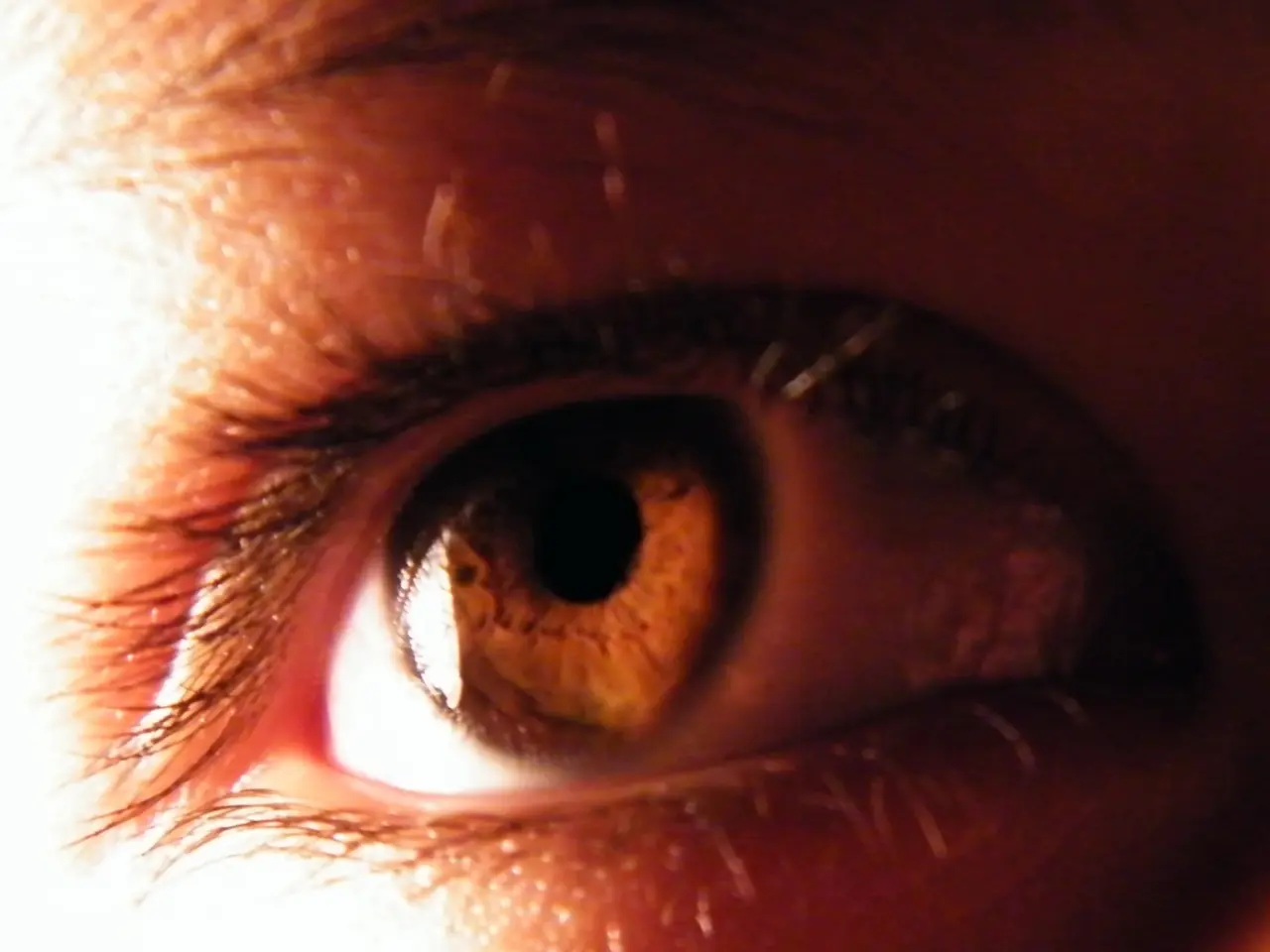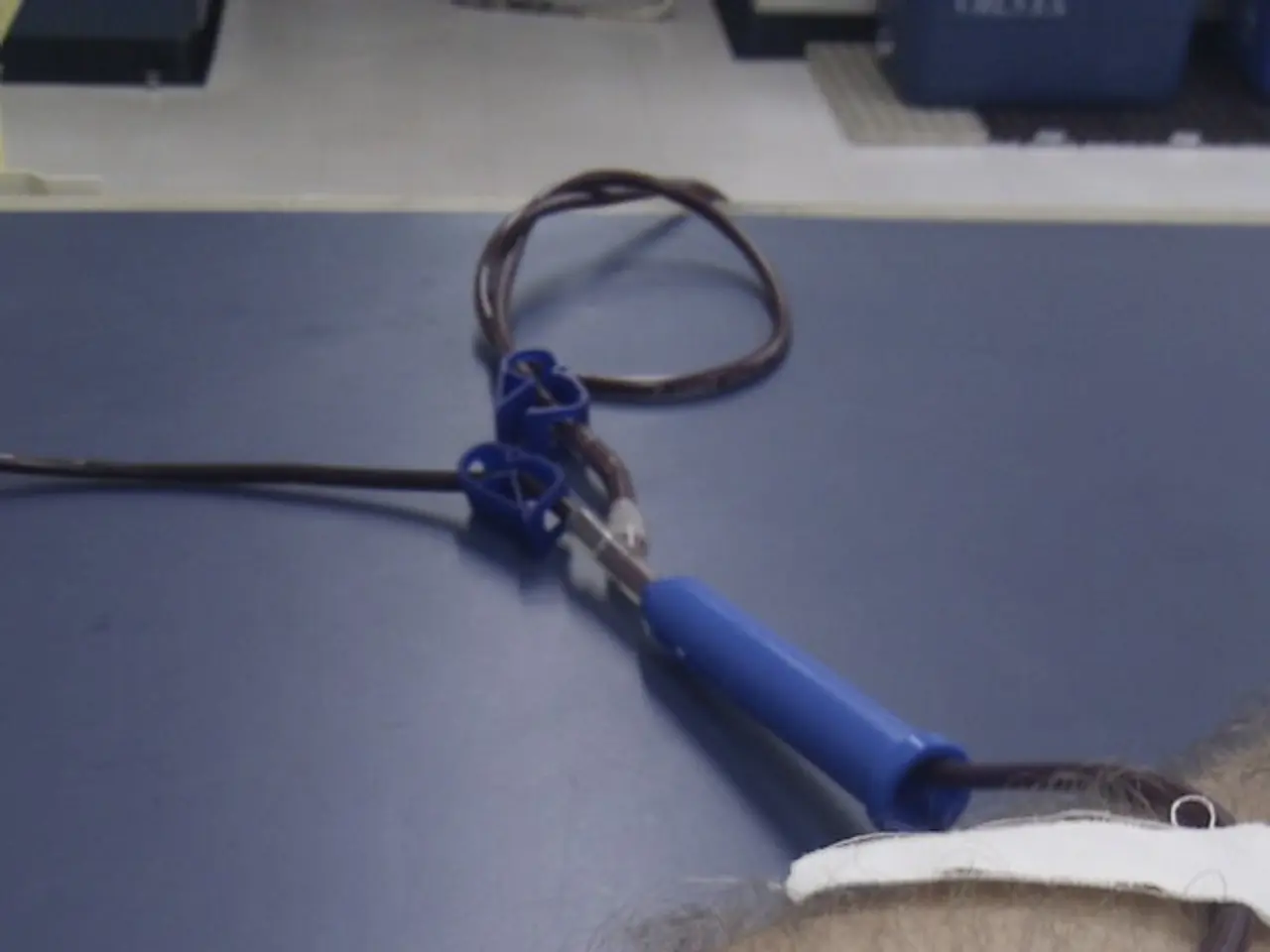Eye Rash: Root Causes, Observable Signs, and Remedies
Rashes around the eyes can be a cause for concern, but understanding their causes and symptoms can help in seeking appropriate treatment. This article explores some common conditions that may lead to eyelid rashes, their distinctive symptoms, and potential treatments.
Atopic Dermatitis (eczema) affects the eyes by causing redness, itching, swelling, dryness, flaking, burning or stinging sensations, and sometimes crusting or scaling on the eyelids. It is often linked to allergies, irritants, or a history of atopic conditions. Treatment involves moisturizing, avoiding triggers, and sometimes topical corticosteroids or calcineurin inhibitors prescribed by a healthcare provider.
Contact Dermatitis, both allergic and irritant types, can also cause redness, swelling, itching, and scaling on the eyelids. It results from direct contact with allergens or irritants such as cosmetics, soaps, fragrances, or metals. Management requires identification and avoidance of the offending agent, along with anti-inflammatory creams like topical steroids.
Seborrheic Blepharitis causes redness, flaky or scaly skin around the eyelids, and can be associated with dandruff or seborrheic dermatitis on the scalp and face. It often causes chronic eyelid inflammation. Treatment includes good eyelid hygiene, warm compresses, and sometimes medicated shampoos or topical treatments as advised by a doctor.
Psoriasis near the eyes can manifest as well-demarcated, red plaques with silvery scales, possibly involving the eyelids. It may cause discomfort and crusting. Treatment usually involves topical steroids or vitamin D analogs but must be done cautiously due to the sensitive eyelid skin.
Orbital Cellulitis is a serious bacterial infection affecting the tissues around the eye, causing redness, swelling, pain, warmth, fever, and sometimes impaired eye movement or vision changes. It requires urgent systemic antibiotics and possible hospitalization to prevent complications.
In general, rashes around the eyes cause symptoms like redness, itching, swelling, scaliness, and sometimes pain or crusting. Because eyelid skin is thin and sensitive, these rashes are often vulnerable to irritation and secondary infection.
Treatment principles include avoiding known irritants or allergens, maintaining eyelid hygiene, using topical medications such as mild corticosteroids, calcineurin inhibitors, or moisturizers under medical guidance, urgent systemic antibiotics for infections like orbital cellulitis, and antiviral treatments if viral infections like herpes zoster ophthalmicus are suspected.
Given the delicate nature of eyelid skin and its involvement in various potentially serious conditions, seeing a healthcare professional for accurate diagnosis and tailored treatment is important.
This summary integrates the typical causes, symptoms, and treatments of common eyelid rashes including atopic dermatitis, contact dermatitis, seborrheic blepharitis, psoriasis, and orbital cellulitis. It is crucial to consult a healthcare professional for any rash around the eyes to determine its cause and possible treatment.
- Atopic Dermatitis (eczema) is an entity that can affect the eyes, causing a rash with symptoms like redness, itching, and flaking on the eyelids.
- Contact Dermatitis, a common skin condition, can lead to an eyelid rash with symptoms similar to atopic dermatitis, but it's triggered by allergens or irritants such as cosmetics or soaps.
- Seborrheic Blepharitis often manifests as a rash around the eyelids with flaky or scaly skin, associated with dandruff or seborrheic dermatitis on the scalp and face.
- Psoriasis near the eyes can present as red plaques with silvery scales, causing discomfort and crusting on the eyelids.
- Orbital Cellulitis, a serious medical-condition, is a bacterial infection around the eye causing redness, swelling, pain, warmth, fever, and possible vision changes, requiring urgent treatment.
- Rashes around the eyes are typically vulnerable due to their thin and sensitive skin, leading to potential irritation and secondary infections.
- Treatment for eyelid rashes often includes avoiding triggers, maintaining good hygiene, using topical medications like corticosteroids, calcineurin inhibitors, or moisturizers under medical advice.
- For infections like Orbital Cellulitis, systemic antibiotics may be necessary, and antiviral treatments might be needed for suspected viral infections like herpes zoster ophthalmicus.
- Given the delicate nature of eyelid skin and its involvement in various potentially serious conditions, seeking accurate diagnosis and tailored treatment from a healthcare professional is essential.
- This summary encompasses the typical causes, symptoms, and treatments of common eyelid rashes, including atopic dermatitis, contact dermatitis, seborrheic blepharitis, psoriasis, and orbital cellulitis.
- Naive skin-care seekers, accustomed to using skin-care products without understanding their impact on sensitive eye areas, would benefit from learning about these common eyelid rashes and their treatments for better health-and-wellness outcomes.




